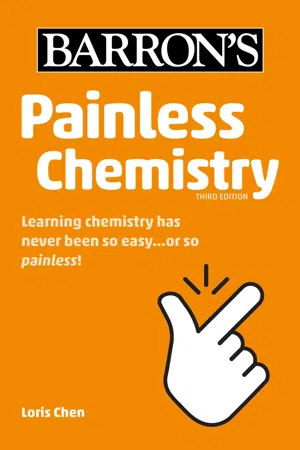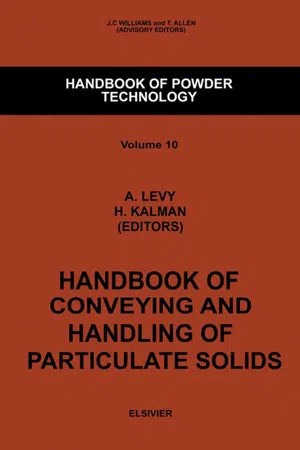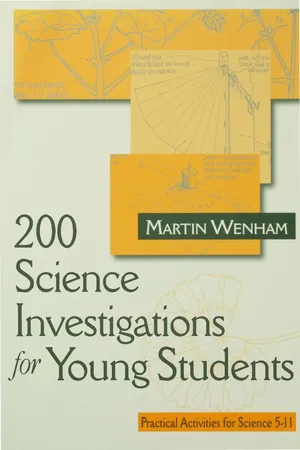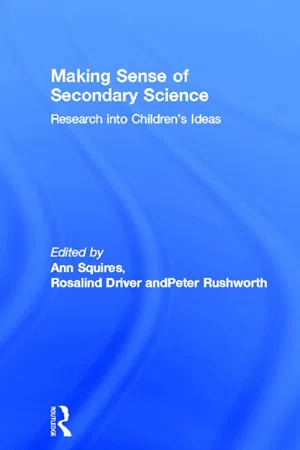Chemistry
Types of Mixtures
Mixtures in chemistry can be classified into two main types: homogeneous and heterogeneous. Homogeneous mixtures have uniform composition and properties throughout, such as saltwater. Heterogeneous mixtures have non-uniform composition and can be visually distinguished, like a salad with different ingredients. These classifications are based on the distribution of the components within the mixture.
Written by Perlego with AI-assistance
Related key terms
Related key terms
1 of 4
Related key terms
1 of 3
4 Key excerpts on "Types of Mixtures"
- eBook - ePub
- Loris Chen(Author)
- 2020(Publication Date)
- Barrons Educational Services(Publisher)
Chapter 5 Mixtures MixturesMixtures are two or more substances that have been combined in such a way that they retain their individual chemical characteristics. Substances in a mixture can be separated by ordinary mechanical means using physical properties such as magnetism, density, mass, and particle size. Processes such as boiling, evaporation, and condensation can also be used to separate substances in a mixture.Figure 5–1. Homogeneous vs. heterogeneousIf the substances are so well mixed they appear to be a single substance, they are said to be homogeneous. If the substances appear to be separate components, they form a heterogeneous mixture.Solutions are homogeneous mixtures. In solutions the substance that is in the highest concentration is the solvent. The minority substances are solutes. The solvent dissolves the solutes.When a solid or gas substance dissolves, it is said to be soluble. If a solid or gas substance does not dissolve, it is said to be insoluble.If two liquids completely mix into a solution, they are miscible. If two liquids do not mix completely into a solution, they are immiscible.Examples of mixturesSolvent Solute Example Appearance Gas Gas Nitrogen, oxygen, argon, and other gases in dry air Homogeneous Gas Liquid Fog—liquid water in gases of air Homogeneous Gas Solid Microscopic particulate matter mixed in air Homogeneous Liquid Gas Oxygen dissolved in water Homogeneous Liquid Liquid Vinegar and waterOil and water HomogeneousHeterogeneous Liquid Solid Salt mixed in waterPepper mixed in oil HomogeneousHeterogeneous Solid Gas Oxygen trapped in ice Heterogeneous Solid Solid Particles of rocks mixed as sandMetal alloys such as bronze (copper and tin) HeterogeneousHomogeneous Solid Liquid Silver and mercury in dental fillings Homogeneous PAINLESS TIPThe solvent pulls the solute into solution. - A. Levy, Christopher J Kalman(Authors)
- 2001(Publication Date)
- Elsevier Science(Publisher)
Solids mixing or powder blending is frequently a stand-alone operation in various processes and technologies, e.g., in manufacturing feeds, insecticides, fertilizer, glass batches, packaged foods, plastics, and cosmetics. It is also frequently carried out simultaneously with other processes or operations, some of which include cooling or heating solid materials, e.g., cooling sugar or preheating plastics, prior to calendering; drying or roasting cereal grains and ores; carrying out heterogeneous chemical reactions; agglomerating powder; and surface coating or enlarging particles common in the preparation of pigments, dyes, pharmaceuticals, detergents, fertilizer, coated seeds and candy. Reducing the size of particles is usually accompanied by solids mixing.2 CHARACTERIZATION OF MIXTURES
The ability to characterize the object or system of interest is essential for any undertaking. Solids mixing is no exception; the object of interest here is a mixture of particulate materials.2.1 Uniformity and homogeneity
Among the characteristics of a mixture, uniformity or homogeneity in the composition is of primary importance because specifying the composition is one of the most crucial requirements for product quality. Nevertheless, the required uniformity in the composition of the mixture is application-dependent or object-oriented. For example, the composition of a human medicine must be strictly prespecified to ensure its effectiveness and safety. Thus, the range of deviations tolerable is narrowly defined. On the other hand, the deviations are of less concern for solid foodstuffs, e.g., dried vegetables and prepackaged soup ingredients. The deviations can be even greater for solids mixtures serving as building materials such as premixed concrete and plaster.Fan et al. [2- eBook - ePub
200 Science Investigations for Young Students
Practical Activities for Science 5 - 11
- Martin Wenham(Author)
- 2000(Publication Date)
- SAGE Publications Ltd(Publisher)
MixturesA mixture is made when two or more materials are physically combined or mixed together while remaining chemically distinct. To understand mixtures and their properties it is necessary not only to mix materials and observe the changes this brings about, but also to use and if necessary devise the means of separating them again. Of the nine possible kinds of mixture (all of which exist), children can easily make and investigate four:- solid dispersed in solid: particulate mixtures (Activities 6.4.1 –6.4.3 );
- solid dispersed in liquid: solutions and suspensions (Activities 6.5.1 , 6.5.2 );
- gas dispersed in liquid: solutions (Activity 6.5.3 );
- liquid dispersed in (porous) solid: (Activity 6.6.1 ).
Particulate mixturesThese are made when two or more solids in small particles are mixed. A useful way to investigate and classify such mixtures is to find the means of separating their constituents. It is worth remembering that although the mixtures suggested can all be easily separated, so that in these cases mixing is an easily-reversible change, not all particulate mixtures are of this kind. For example, a mixture of two materials such as finely-ground salt and sugar, both of which are highly soluble in water, is remarkably difficult to separate.Activity 6.4.1
Separating particulate mixtures by particle size
The two most commonly-used methods of separating materials by particle size are sieving and sedimentation. Sieving is more useful for separating larger particles, sedimentation for smaller ones; and while sieving is a good introduction to this kind of separation, sedimentation is more likely to be useful in conjunction with other methods when investigating complex materials, such as soils (see Activity 11.10.2 ).Sieving - eBook - ePub
Making Sense of Secondary Science
Research into children's ideas
- Rosalind Driver, Peter Rushworth, Ann Squires, Valerie Wood-Robinson(Authors)
- 2005(Publication Date)
- Routledge(Publisher)
36 report that young children often hold to the idea that a mixture such as air is one substance.Passage contains an image
10Chemical Change
Mixtures of substances
Most of the materials children encounter in everyday life are mixtures which, from a science viewpoint, cannot be regarded as pure. Consequently, conflict of meaning may arise when these materials are labelled ‘pure’.1 2 3 Not only pupils but also student teachers suffer confusion.4 Although about 60 to 70 per cent of a sample population of Belgian and Dutch pupils (aged 13) were found to understand that ‘pure substance’ meant ‘not a mixture’, for some 13 to 17 per cent the meaning was ‘without harmful contents’. When the meaning of the word ‘pure’ itself was explored, just 45 per cent had the idea of unmixed but 48 per cent had ideas that included ‘clean’, ‘bright’, ‘beautiful’, ‘as it should be’ and ‘accurate’.1Chemical Change
Although in science the term ‘chemical change’ is reserved for processes in which the reacting chemical substances disappear and other (new) substances appear, several studies have found that children often use the term ‘chemical change’ to encompass changes in physical state and other physical transformations, particularly so when the colour of a substance alters.3 5 6Some educators do not distinguish between physical and chemical changes on theoretical grounds but others find such a distinction useful for the development of science ideas.7 8 9 How well pupils make such a distinction depends partly on their conception of ‘substance’. For instance, if they regard ice as a different substance from water, then they are likely to classify the melting of ice as a chemical change. Vogelezang10 has suggested that substances should be regarded as identical if their properties are identical when compared under the same conditions.Andersson11 12 and Pfundt13 have investigated children’s notions of chemical changes. They appear to fall into six main types:- no conception other than ‘it just happens like that’;
Index pages curate the most relevant extracts from our library of academic textbooks. They’ve been created using an in-house natural language model (NLM), each adding context and meaning to key research topics.
Explore more topic indexes
Explore more topic indexes
1 of 6
Explore more topic indexes
1 of 4



